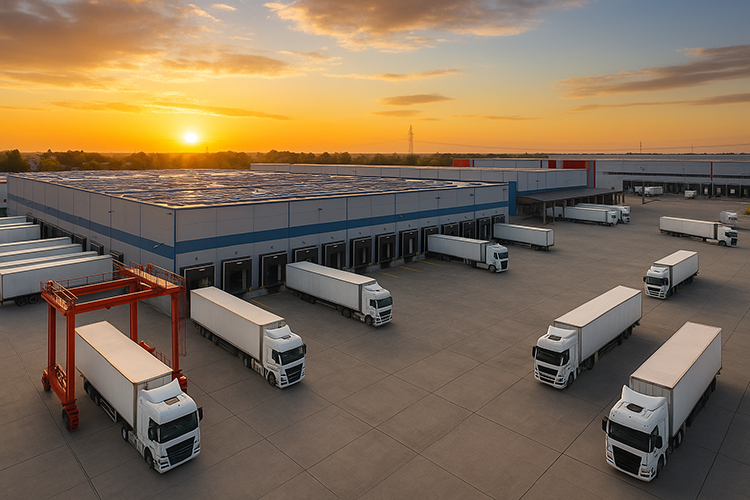Warehousing and Logistics: Driving India’s industrial real estate transformation
India’s march toward a $5 trillion economy is reshaping its real estate sector, with warehousing and logistics emerging as one of the fastest-growing asset classes. Once considered an underdeveloped segment, the sector has matured rapidly in the past five years, buoyed by e-commerce growth, manufacturing expansion, and targeted policy support.
The scale of the transformation is striking. According to JLL, Grade A warehousing stock in India’s top eight cities grew from 88 million sq ft in 2019 to 238 million sq ft by 2024, representing a compound annual growth rate of 22 percent. Net absorption in 2024 reached a record 50.4 million sq ft, while total logistics inventory across these cities now stands at 438 million sq ft, with projections pushing toward 700 million sq ft by 2028. The sector has become a magnet for investors: in 2024, institutional investment in warehousing and logistics rose to US $1.96 billion, accounting for 29 percent of total real estate inflows, a 203 percent year-on-year increase.
E-commerce has been the dominant driver. India’s online retail market was valued at US $125 billion in 2024 and is projected to reach US $345 billion by 2030, according to Grant Thornton and industry trackers. Giants such as Amazon, Flipkart, and Reliance continue to build state-of-the-art distribution centres in peri-urban areas, while the rise of tier-2 and tier-3 cities—including Indore, Lucknow, and Jaipur—has created strong demand for regional logistics hubs. In the first half of 2025 alone, warehousing leasing activity across the top eight cities surged to 27.1 million sq ft, a 63 percent year-on-year increase, with e-commerce and third-party logistics companies leading the way.
The manufacturing sector is further fuelling demand, supported by initiatives such as “Make in India” and the Production-Linked Incentive (PLI) scheme. In Q1 2025, manufacturing accounted for 48 percent of warehousing transactions, almost doubling from the previous year. Developers are responding with large industrial parks: Welspun One Logistics Parks recently acquired 107 acres in Bengaluru, committing ₹2,150 crore for projects across Karnataka and Tamil Nadu, while Greenbase in southern India is investing US $800 million to expand its footprint to 20 million sq ft.
Policy measures have played a decisive role. The government’s National Logistics Policy (NLP), launched in 2022, aims to reduce logistics costs—which currently stand at 13–14 percent of GDP—to around 8 percent, bringing them closer to global standards. The PM Gati Shakti Mission seeks to integrate transport and logistics networks, while the planned rollout of Multi-Modal Logistics Parks (MMLPs) is expected to enhance efficiency with mechanized warehousing, cold storage, and intermodal connectivity. States are also joining the effort: in Uttar Pradesh, subsidies worth nearly ₹9.8 crore were recently allocated to private warehousing projects, underscoring the growing role of public-private collaboration.
The sector is also drawing long-term capital from global investors such as Brookfield and Blackstone, who are building logistics parks with sustainability and efficiency in mind. These projects reflect a shift in how real estate is valued—not only for location and scale but also for energy use, automation, and alignment with ESG frameworks.
Analysts say India’s warehousing and logistics market is at the centre of a broader industrial real estate revolution. The sector is no longer just an enabler of e-commerce and manufacturing but has become a vital component of India’s economic infrastructure. With absorption at record highs, a deep pipeline of supply, and coordinated policy support, warehousing is set to redefine both India’s real estate landscape and its competitiveness in global trade.
© 2025 www.cijeurope.com









